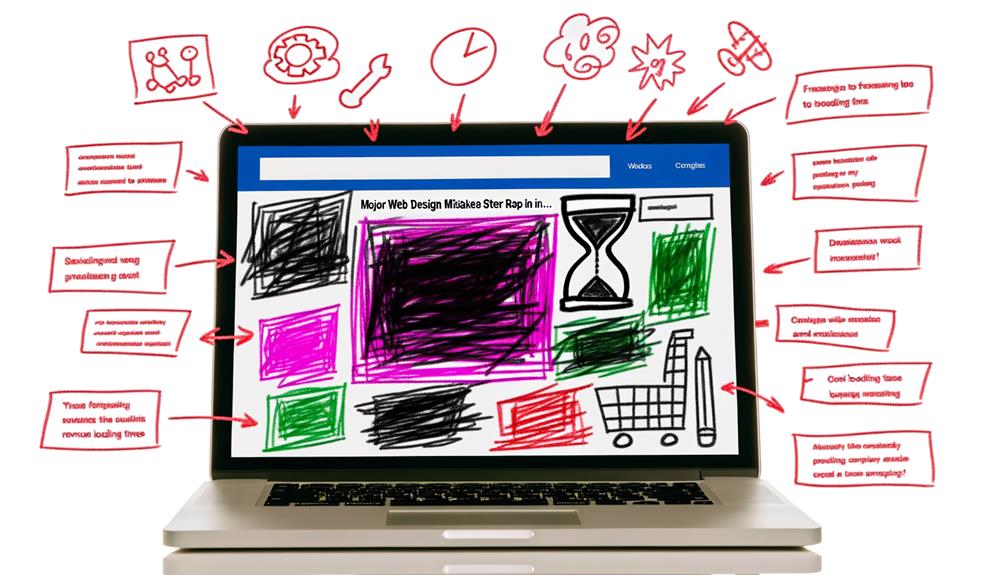As website designers, we've all experienced the frustration of stumbling upon a digital space that feels like a confusing maze or a sluggish, outdated relic.
In 2023, the stakes are higher than ever to avoid the eight critical website design mistakes that can send potential customers running for the virtual door.
These pitfalls not only affect user experience but also impact a company's credibility and bottom line.
It's time to ensure that your website stands out for all the right reasons.
Are you confident that your site is steering clear of these costly blunders?
Accessibility Pitfalls
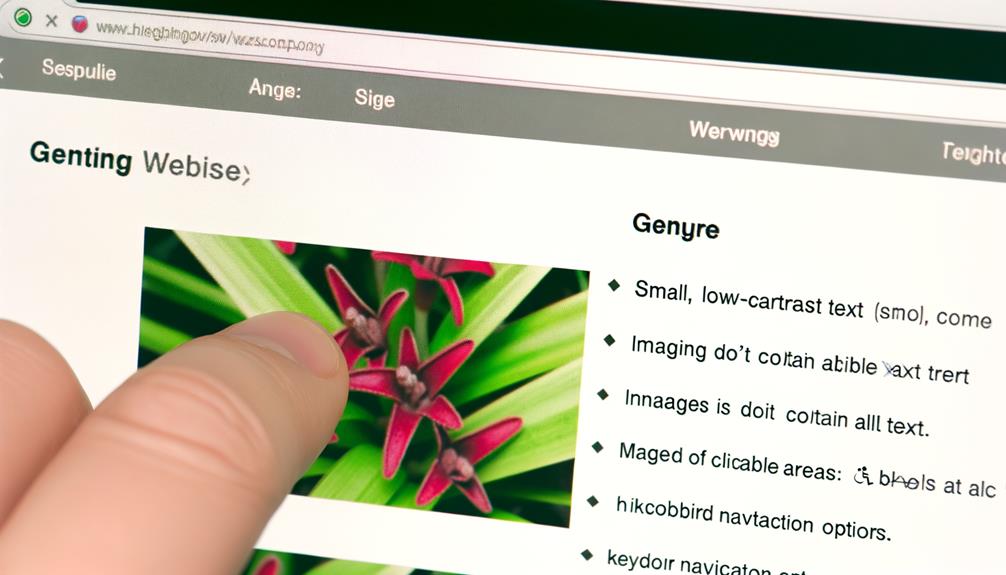
Prioritizing accessibility is crucial in website design to ensure that all users, regardless of ability, can navigate and interact with the site effectively. Neglecting accessibility perpetuates discrimination and limits the freedom of individuals with disabilities.
Insufficient color contrast, missing alt text for images, and inadequate visual focus indicators are common pitfalls that hinder liberation. Our responsibility is to dismantle these barriers by implementing accessible design principles.
By prioritizing accessibility, we empower all users to access information and engage with content independently. Let's liberate our digital spaces from exclusionary practices and embrace an inclusive mindset.
Together, we can create a web environment that champions diversity and equality. It's time to build a digital world where everyone has the opportunity to participate fully and equally.
Responsive Design Neglect
Neglecting the crucial aspect of accessibility perpetuates discrimination and limits the freedom of individuals with disabilities, and it is equally imperative to recognize the significance of responsive design in today's digital landscape. Responsive design ensures that websites adapt to various devices, providing an optimal user experience. Consider the following aspects when evaluating your website's responsiveness:
| Responsive Design Neglect | Importance |
|---|---|
| Forgetting the importance of responsive design | Mobile devices constitute over 58% of global website traffic. |
| Content should be easy to navigate on all devices | Neglecting mobile users is a common mistake. |
| The age of breakpoints is now | Responsive design is no longer optional. |
Ensuring that your website is accessible and responsive is vital for inclusivity and user satisfaction. These considerations are not only ethical but also make good business sense in today's diverse and digitally-driven world.
User Experience Vs. Aesthetics
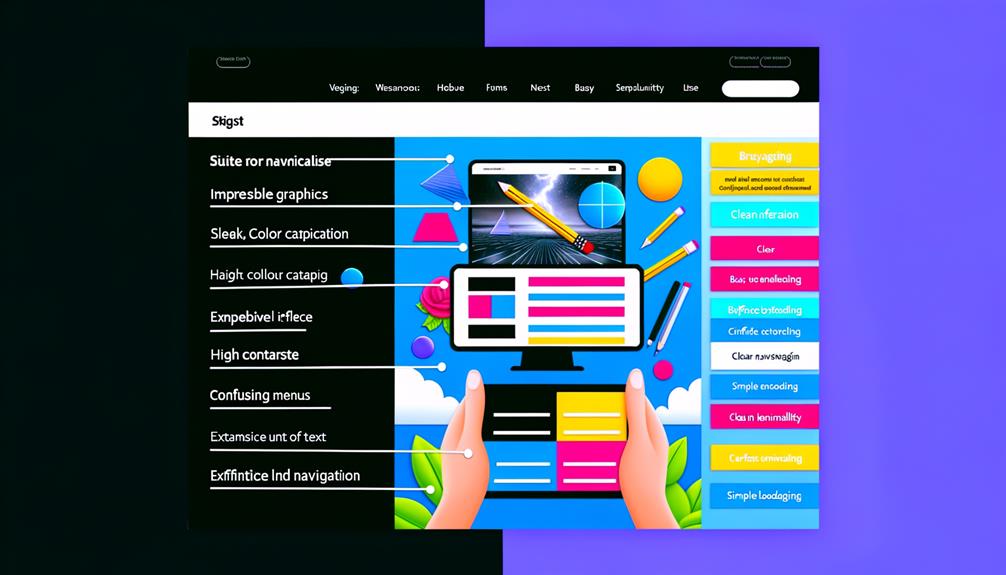
How can website designers strike a balance between user experience and aesthetic appeal to create an engaging and functional digital platform?
It's vital to prioritize user experience without neglecting the importance of aesthetics. Compromising user experience for the sake of visual appeal can alienate visitors, impacting the site's effectiveness.
A harmonious blend of both aspects is crucial for capturing and retaining audience attention. Excessive design elements may detract from the website's purpose, while an overly minimalist approach might lack visual appeal.
Striving for a balanced design that enhances user interaction and engagement is essential. By considering user experience and aesthetics as complementary components, designers can create a website that not only looks visually appealing but also provides a seamless and enjoyable browsing experience.
Lack of Customization
Customization is a fundamental aspect of effective website design, allowing businesses to create a unique and tailored online presence that reflects their brand identity and engages visitors. When designing a website, lack of customization can hinder its effectiveness.
Here's why customization is crucial:
- Brand Reflection: Customization allows your website to truly reflect your brand identity.
- Engagement: Tailoring your site to your audience enhances visitor engagement.
- Uniqueness: A unique website sets you apart from competitors.
- Personalization: Customization enables personalized user experiences, fostering loyalty.
Inefficient Website Features
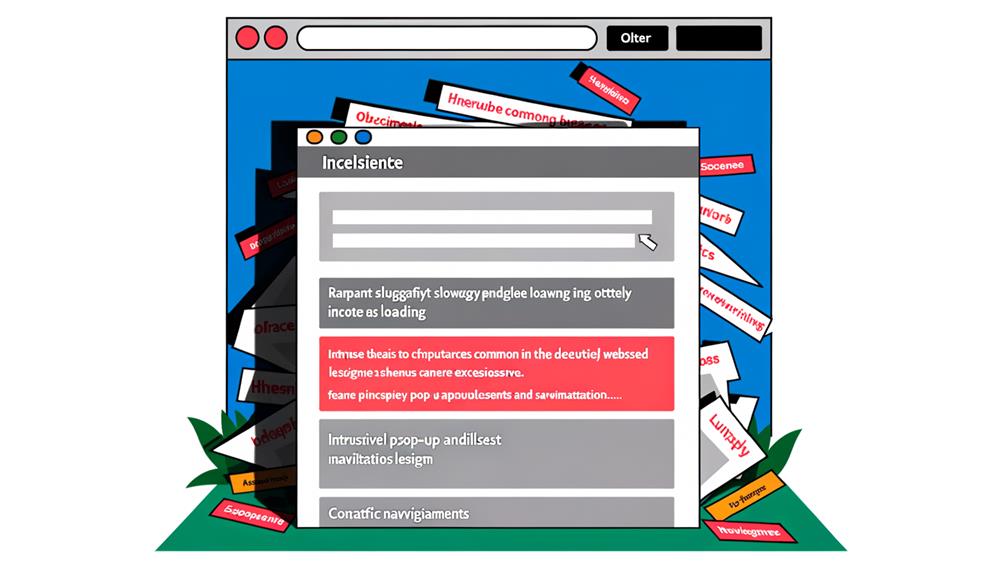
The lack of customization can result in the inclusion of inefficient website features, hindering the overall effectiveness of the online platform. It's crucial to carefully select and implement features that serve a purpose and contribute to the user experience. Below is a table illustrating some inefficient website features to avoid:
| Inefficient Website Features | Impact |
|---|---|
| Rotating carousels | Low user interaction, high mobile interaction cost |
| Autoplaying multimedia | Increases page load time, disrupts user experience |
| Overly complex animations | Slows down website, distracts users |
Carefully considering the necessity and impact of each website feature is essential for creating a streamlined and effective online platform. By avoiding inefficient features, we can liberate our website from unnecessary clutter and improve its overall performance.
Hierarchy Mistakes
To ensure a cohesive and user-friendly website experience, prioritizing hierarchy in website design is paramount. Neglecting hierarchy can lead to confusion and frustration for users, ultimately hindering the effectiveness of the website. Here are key hierarchy mistakes to avoid:
- Lack of clear typography hierarchy can confuse users and diminish the importance of content.
- Disorganized website elements create a chaotic user experience, leading to frustration and disengagement.
- Unclear actions and goals hinder user interaction and prevent seamless navigation.
- Failing to establish a clear visual hierarchy can result in users overlooking significant content and calls to action.
Navigation Challenges
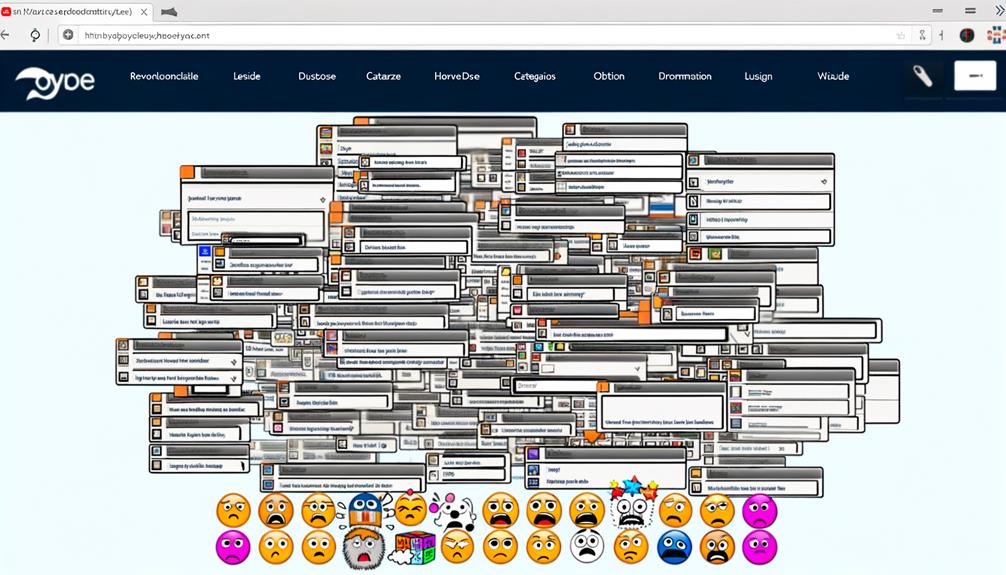
Prioritizing clear and intuitive navigation is essential for ensuring a seamless and user-friendly website experience.
Confusing or convoluted navigation can frustrate and drive away users, hindering the overall effectiveness of your site.
We must ensure that our navigation is straightforward, with clear labels and logical organization.
Users should easily find what they're looking for, whether it's product information, contact details, or other essential content.
Implementing intuitive navigation not only enhances user satisfaction but also contributes to achieving website goals.
By prioritizing clear navigation, we empower users to navigate our site effortlessly, ultimately leading to increased engagement and conversions.
Let's embrace clear and intuitive navigation as a fundamental aspect of our website design, empowering users to explore and interact with our content effortlessly.
Business Purpose Communication
Ensuring clear and intuitive navigation is fundamental for a seamless and user-friendly website experience. Now, we must effectively communicate our business purpose to enhance credibility and engage visitors.
- Clearly define your business purpose above the fold.
- Use compelling and concise language to convey your value proposition.
- Incorporate visual elements that align with your brand identity and message.
- Ensure that your business purpose is consistent across all pages and touchpoints.
Frequently Asked Questions
How Can I Ensure That My Website Is Accessible to All Users, Including Those With Disabilities?
We ensure website accessibility by prioritizing it. This includes using sufficient color contrast and providing appropriate alt text for images.
We also prioritize responsive design, ensuring easy navigation on all devices. Balancing user experience and aesthetics is crucial; we focus on function over excessive design elements.
Customization and uniqueness reflect our branding. We avoid inefficient features and maintain clear hierarchy and navigation.
Effectively communicating our business purpose enhances credibility and user understanding.
What Are the Key Considerations When Designing a Website to Be Responsive Across Different Devices?
When designing a website to be responsive across different devices, we prioritize user experience. Neglecting mobile users is a common mistake as mobile devices constitute over 58% of global website traffic. Content should be easily navigable on all devices, and the age of breakpoints is now.
We emphasize the importance of responsive design to ensure a seamless experience, regardless of the device being used.
How Can I Find the Right Balance Between a Visually Appealing Website and a User-Friendly Experience?
We find the right balance between a visually appealing website and a user-friendly experience by prioritizing accessibility, embracing responsive design, and balancing user experience with aesthetics.
Customization and uniqueness, efficient features, clear hierarchy, and navigation, along with effective communication of our business purpose, are essential.
Why Is It Important to Customize My Website Rather Than Using a Standard Template?
Customizing your website is crucial for reflecting your unique brand and standing out in a crowded digital landscape. Using a standard template can lead to a generic and uninspiring online presence.
Tailoring your site to align with your brand identity and values enhances user engagement and trust. By standing out, you differentiate yourself from competitors and create a memorable experience for your audience.
This can ultimately lead to increased conversions and business success.
What Are Some Common Website Features That May Actually Hinder the Effectiveness of My Site?
Prioritizing accessibility is critical for effective website design. This involves ensuring that the website is usable by individuals with disabilities and adheres to accessibility guidelines and standards.
Embracing responsive design is another important aspect of website design. This means designing the website in a way that it can adapt and provide an optimal user experience across different devices and screen sizes.
Balancing user experience and aesthetics is essential. The website should not only look visually appealing but also provide a seamless and intuitive user experience, making it easy for users to navigate and find the information they need.
Customizing for uniqueness is also crucial. A website that stands out from the competition and reflects the brand's personality can leave a lasting impression on users and help create a memorable experience.
Avoiding inefficient features is important to prevent clutter and confusion on the website. Including only relevant and necessary elements can help streamline the user experience and make it easier for users to achieve their goals.
Maintaining clear hierarchy is vital for effective website design. This involves organizing content in a logical and structured way, using headings, subheadings, and visual cues to guide users through the website and prioritize information.
Ensuring clear navigation is another key aspect. Users should be able to easily find their way around the website and access different pages or sections without any confusion.
Effectively communicating the business purpose is critical. The website should clearly convey the brand's message, values, and offerings, helping users understand what the business is all about and encouraging them to take action.
Neglecting these features can hinder website effectiveness and user engagement. It's crucial to prioritize these elements to create a user-friendly, visually appealing, and impactful website that achieves its goals.
Conclusion
In conclusion, avoiding common website design mistakes is essential for creating a successful online presence in 2023. By prioritizing accessibility, responsive design, customization, and clear communication of business purpose, we can ensure that our websites are both visually appealing and functional across all devices.
By steering clear of inefficient features and maintaining clear hierarchy and navigation, we can provide a user-friendly and impactful digital experience. Let's strive to create compelling and effective websites that reflect the branding and identity of the businesses they represent.


